#hartenberg
Explore tagged Tumblr posts
Text
Was anyone going to tell me that there was an art exhibit based on the gay love letters exchanged between Johannes von Müller and the fake count who defrauded him, or was I just supposed to figure that out for myself (source):

"Marc Bauer: I Emperor Me
The title of Marc Bauer’s latest series of drawings is taken from a tradename for an industrial glove, the EMPEROR ME108 Heavyweight, produced by Marigold Industrial. The inspiration for the drawings, by contrast, is rather more sentimental: the twohundred-year-old amorous correspondence, written in French and only recently published, between Johannes von Müller, custodian of the Imperial Library of Vienna, and a younger man of his acquaintance posing in the letters as a ‘Hungarian count’, with the plausibly unpronounceable name of Louis Batthyány Szent-Iványi. What do these startling opposites—the ‘Emperor of hand protection for industrial use’ and a historical case of aristocratic fraud at the dawn of the Austrian Empire—have in common? One would think very little. But in Marc Bauer’s hands they represent power, absence, and the objectification of love and desire.
The drawings feature fetishized articles of clothing: a latex glove, a leather Chap, a shirt. These objects are isolated and alienated from their original function. They are even, one could say, alienated from their secondary function as fetish-wear. (For seen without a human leg, it is initially hard to recognize the Chap for what it is.) It is very unlikely that the glove, the ‘emperor’ of the series, has ever been put to ‘industrial use’. The manufacturers state its possible applications as being in ‘the chemical industries, fishing, agriculture, mining’. But this is an art gallery, not a pig-shed, and the majority of present viewers are probably more familiar with its ulterior use in the practice—or rather, at least, the dark signification of the practice—of fisting. In this regard, Bauer’s choice of subject might be called camp. He invites us to understand these objects through a shared, ironizing code. He suggests sex, or at least, a certain type of sex. But there is nothing camp about these images. There is nothing camp about their rendering—which is anything but playful—nor their meaning, which is about the signification of love in general, not just in secret between a certain type of men.
The gloves, the sleeves, the strangely rigid leg-covering should be inanimate objects. But somehow they are not. Larger-than-life and viewed from the same perspective, they seem to resonate with the memory of their wearer. They are more than clothing. They are like the dead skin shed by their wearers, the remnants of… affection? desire? submission? One is almost tempted to read a narrative into them, as markers that symbolize different stages in a relationship or affair. In this they are similar to the quotes from the letters transcribed in the portfolio. The artist has taken each quote from a different letter. Each quote captures a different point in the unusual story of love and betrayal in early 19thcentury Vienna. They plot a descent from sentimental (frankly naïve) ardour, to betrayal, then melancholy and shame. The letters are fragments of desire, just as the objects in the drawings are. Marc Bauer seems to suggest that we can only desire or love a person in fragments, that we can only ever grasp a person in fragments, in snippets of sentiment, and that for desire or love to exist it must persist in the person’s absence, through objects they have touched. From these fragments of longing—letters, slowly dying flowers, a crushed shirt—one construes a love affair; in the drawings it is a modern one, in the letters it is historical.
The correspondence traces a love story between an esteemed Swiss-born scholar (Müller) and a Swiss-born swindler (Hartenberg), posing as a count. Müller’s infatuation was entirely lived out in his imagination. He never met the ‘count’. It was love experienced as the acute presence of another’s absence, just as the glove’s form is very literally a presence in absence. The ‘count’s’ letters were written to instil desire not just through their words, but through the very paper on which they were written. For in 1802, when the correspondence began, letters were, we can safely assume, one of the most commonly fetishized objects. A letter sometimes bore the loved one’s scent and always bore the loved one’s touch, the imprint of a hand, the perspiration of the writer’s fingers. Before typewriters, stenography, and email, letters were objects that signified, among other things, the absence of the writer combined with the presence of the reader in his or her mind. Letters were always written by hand and read while held in the hand. The glove, obviously, is also all about the hand, and the sleeve ends in a hand. The artist repeatedly emphasises the hand, objectifies it, because he wants to evoke the sense of touch and contrast this with the absence of the loved one’s touch that lingers only on these lifeless things and, through them, in the mind.
The ribbons, another ironic, historicizing gesture, are also there to tempt our sense of touch and remind us that in a drawing, unlike in a sculpture or painting, if we reach out and touch, there is nothing to feel but paper. But in his rendering of the glove and the sleeve, Bauer also draws attention to his own hand. For these are drawings. They are the graphic legacy of the movements of a hand. Bauer even references the ‘graphic legacy’ of the art of drawing—by drawing, with clear affection, the folds of the sleeve, in memory of the wearer, perhaps, but also in (unconscious?) memory of the motif of drapery in the graphic arts, the fondness—no, the obsession—of artists as long ago as Schongauer and Dürer to draw folds as a way to show off their skill and freeze time in the prolonged moment of their gaze. For elaborate folds only occur through movement, but, like the bouquet of flowers—a still life—they can only be truly seen when the subject stands unnaturally still, ‘plays dead’ as it were, so that he or she and the clothes he or she is wearing can live on in a work of art—just as a fictitious love affair, once exposed, once dead, only lives on in letters."
#Marc Bauer out here doing the most for our boy Johannes von Müller#Also the description of the letters as a fetishized object is so good#Johannes von Muller#Johannes von Müller#queer history#Fritz von Hartenberg#art#Marc Bauer
34 notes
·
View notes
Text
Here's a quick look at the design of the upcoming Steve Reich Collected Works 27-disc box set, due March 14 on Nonesuch. Pre-order here.
The design is by Ben Tousley, who laid out the books with DM Stith. The photo of Steve Reich on the box is by Dorothy Littell Greco; that on the booklet cover is by Betty Freeman. The project director and editor is Sidney Chen.
Steve Reich Collected Works features music recorded during the composer’s 40 years on Nonesuch—six decades of his compositions, including first recordings of his two latest works, Jacob’s Ladder and Traveler’s Prayer—plus two extensive booklets with new essays by Robert Hurwitz, Michael Tilson Thomas, Russell Hartenberger, Judith Sherman, and Nico Muhly, and a comprehensive listener’s guide by Timo Andres. The box includes 24 discs of Nonesuch recordings and three from other labels.
#steve reich#collected works#box set#nico muhly#timo andres#michael tilson thomas#russell hartenberger#nonesuch#nonesuch records
3 notes
·
View notes
Text
Greenock Creek, there’s no pretense—just the honest work of two grounded craftsmen. Alex Peel, a seasoned winemaker with deep country roots, works in seamless collaboration with viticulturist Pete Atyeo who has nurtured the estate vineyards for nearly 40 years. Together, they follow a practical, minimal-intervention approach. Their philosophy is simple where the vineyard is first and the winery is second, allowing the wines to guide the winemaker to express the unique characteristics of each vineyard site.
#hewitson wines#Australian Wines#torbreck wines#Mexican Wines#South African Wines#Hartenberg Wine Estate#Best wines from South Africa#Aaldering Vineyards & Wines#usa wines#barossa winery#langmeil winery barossa#Heritage vineyards & winery#Hentley Farm Wines#Greenock Creek Vineyard & Cellars#Family vineyard#De Trafford Wines#Vilafonté#Wines Cabernet Franc#Wines Shiraz Syrah#Wines Cabernet Sauvignon
0 notes
Link
"While AI can speed up the writing process, it doesn’t optimize quality—and it endangers our sense of connection to ourselves and others"
0 notes
Text
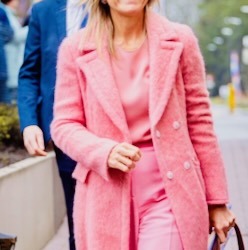

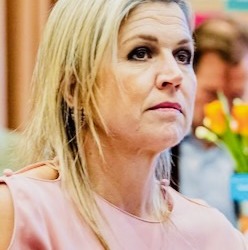

Through the Years → Queen Máxima of the Netherlands (1,631/∞) 30 January 2025 | Queen Maxima of The Netherlands attends an action meeting of the National Coalition of Financial Health at Woonzorgpark De Hartenberg in Wekerom, Netherlands. Queen Maxima is the inspirer of the national coalition.(Photo by Patrick van Katwijk/Getty Images)
12 notes
·
View notes
Text

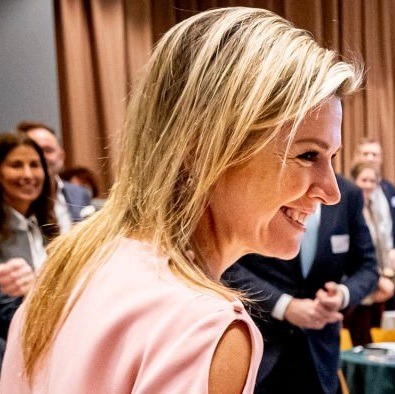
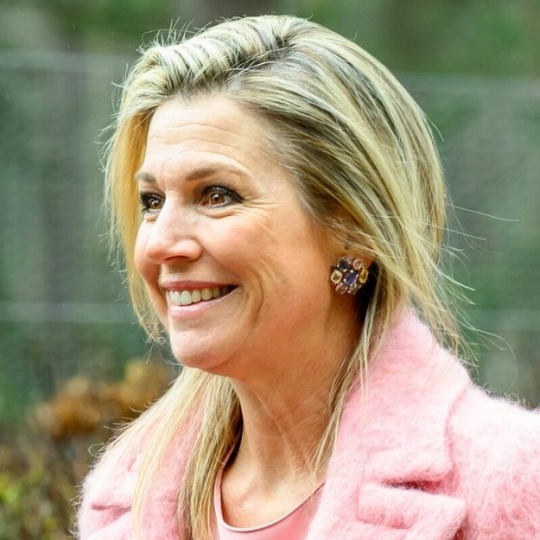
Queen Máxima of The Netherlands visiting Woonzorgpark De Hartenberg in Wekerom for a strategy meeting of the National Coalition for Financial Health (NCFG) - 30.01.25
2 notes
·
View notes
Link
0 notes
Link
0 notes
Text
Bombenfund in Mainz an der Paul-Denis-Straße: Entschärfung voraussichtlich am Donnerstag, 4. Juli 2024
#Mainz (ots) Im Rahmen von Baumaßnahmen angrenzend an das Gelände des Weltkulturerbes Alter Jüdischer Friedhof an der Paul-Denis-Straße im Stadtteil Hartenberg-Münchfeld wurde am Dienstagnachmittag (2. Juli 2024) eine 500 Kilogramm schwere britische Weltkriegsbombe gefunden. Der sofort informierte Kampfmittelräumdienst Rheinland-Pfalz, die Polizei sowie die Feuerwehr sichteten den Bombenfund…

View On WordPress
0 notes
Text
PLAGIATE
“Die Sprache anderer zu stehlen bedeutet, nicht nur ihre Worte zu nehmen, sondern auch ihre Ideen, die Essenz dessen, wer sie sind.“ - Laura Hartenberger
Deshalb erkennt man den zutiefst menschenverachtenden Menschen auch daran, dass er ständig ungeniert das Vokabular anderer stiehlt und ihren Stil zu stehlen versucht - das ist mehr als nur Faulheit, mehr als nur Diebstahl, es ist eine geistige Vergewaltigung freier Individualiät.
0 notes
Text
youtube
The 27-disc box set Steve Reich Collected Works is out now on Nonesuch. Take a quick look inside in this unboxing video narrated by the composer and pick up a copy here.
Collected Works features music recorded during the composer's 40 years on the label—six decades of his compositions, including first recordings of his two latest works, Jacob’s Ladder and Traveler’s Prayer (both also available to stream/download today)—plus two extensive booklets with new essays by Robert Hurwitz, Michael Tilson Thomas, Russell Hartenberger, Judith Sherman, and Nico Muhly, and a comprehensive listener’s guide by Timo Andres. Nonesuch made its first record with Steve Reich in 1985; he was signed exclusively to the label that year. Collected Works includes 24 discs of Nonesuch recordings and three from other labels.
Design by Ben Tousley, who laid out the books with DM Stith. Project director and editor: Sidney Chen.
0 notes
Text
Discover the Bold Elegance of Torbreck Wines
Torbreck Wines captures the heart of Australia’s Barossa Valley with rich, handcrafted wines that celebrate tradition and terroir. Known for bold Shiraz, elegant Grenache, and complex blends, Torbreck Wines reflect a deep respect for old vines and European winemaking techniques. Each bottle tells a story of passion, heritage, and exceptional craftsmanship. Whether you’re a seasoned wine enthusiast or exploring premium wines for the first time, Torbreck offers a tasting experience that is both powerful and refined. Perfect for collectors, gifting, or elevating your next dinner, Torbreck Wines bring the soul of Barossa directly to your glass—no AI needed.
#hewitson wines#Australian Wines#torbreck wines#Mexican Wines#South African Wines#Hartenberg Wine Estate#Best wines from South Africa#Aaldering Vineyards & Wines#usa wines#barossa winery#langmeil winery barossa#Heritage vineyards & winery#Hentley Farm Wines#Greenock Creek Vineyard & Cellars#Family vineyard#De Trafford Wines#Vilafonté#Wines Cabernet Franc#Wines Shiraz Syrah#Wines Cabernet Sauvignon
0 notes
Photo
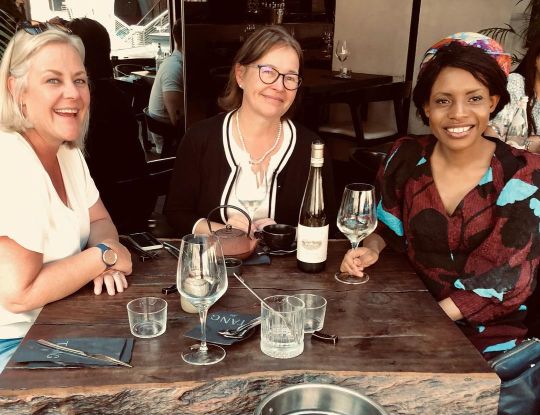
Ladies Who Lunch 👒 Our bi-annual @hartenberg_wine_estate Nelson Mandela Square gathering. A truly delightful day at @tang_sandton, thank you for the laughter, loveliness and Riesling @heleen_rabe @kellysik1 #TasteLetsSee #Hartenberg #TangSandton (at Tang Asian Luxury Restaurant & Bar) https://www.instagram.com/p/Ci2SDGeKGcj/?igshid=NGJjMDIxMWI=
0 notes
Link
Daytona Mainz
1 note
·
View note
Photo

Hartenberg Home Tasting | Good food, good friends and good wine. Why we started this journey, and what keeps us drawn to it. | Grateful to have hosted an intimate and jovial @hartenberg_wine_estate tasting at @olives_and_plates for Zanele and her friends. It was wonderful to celebrate a special occasion with wonderful people. Thank you for everything @kellysik1 @heleen_rabe @olives_and_plates. Looking forward to sharing more from our tasting and to more #HartenbergHomeTastings - please email me if you would like us to collaborate on your own Hartenberg Home Tasting 🍷❤️ | #tasteletssee #hartenberg #ourbloodispurple (at Olives & Plates 140 West) https://www.instagram.com/tshepimolisana/p/BwU-nwtBxBiPkj9RreehvFnIIKo0zQJR0HNroM0/?utm_source=ig_tumblr_share&igshid=4pyqusdxvx6
0 notes